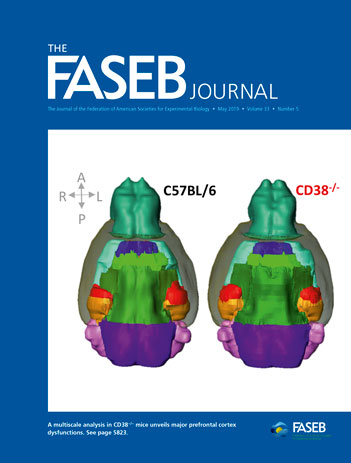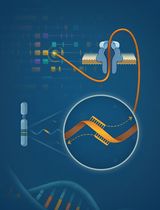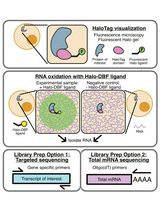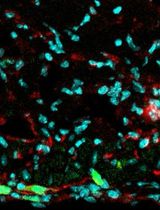- EN - English
- CN - 中文
Circadian Gene Profiling in Laser Capture Microdissected Mouse Club Cells
激光捕获显微解剖小鼠棒状细胞的昼夜节律基因分析
发布: 2020年04月20日第10卷第8期 DOI: 10.21769/BioProtoc.3590 浏览次数: 4636
评审: Narayan SubramanianWoojong LeeAnonymous reviewer(s)
Abstract
Cell heterogeneity is high in tissues like lung. Research conducted on pure population of cells usually offers more insights than bulk tissues, such as circadian clock work. In this protocol, we provide a detailed work flow on how to do circadian clock study by RNA seq in laser capture micro-dissected mouse lung club cells. The method uses frozen tissues and is highly reproduciable.
Keywords: Club cell (棒状细胞)Background
Circadian clock is found all over the body and in the lung it is shown to strongly oscillate in Club cells (Gibbs et al., 2009 and 2014). Whole lung circadian gene profiling is carried before in mice and rat (Sukumaran et al., 2011; Zhang et al., 2014). However, at least 15% of those circadian genes are coming from leukocytes (Haspel et al., 2014). It is useful but difficult to get cell type specific circadian gene profiling, given the high heterogeneity of cell population in tissues. Tissue digestion followed by flow cytometry sorting is usually to solve this problem but it is not clearly whether gene expression will change during this process. An alternative way is to use laser capture microdissection to take target cells from fixed tissues, Note that this could lead to comprised cell population purity. Specific cell population can be identified by antibody staining or anatomic information. In terms of Club cells in lung, they are known to be enriched in distal bronchiolar epithelium. A protocol showing how to do microarray using RNA from Club cells by laser capture (PixCell II Laser Capture Microdissection system) was published more than 10 years before and there are some advances in the technique (Betsuyaku and Senior, 2004; Cummings et al., 2011). Here I present a detailed protocol on circadian gene profiling in Club cell RNA by laser capture microdissection in Leica LMD6500 system. It covers from mouse tissue collection to get RNA samples ready for RNA seq library construction. Generally, to get good quality RNA, all tools and working areas should keep RNase contamination to the minimum (like using RNaseZAP solution to clean and keep sections dry in microdissection). For all the downstream steps, please refer to the published protocol by Jiajia Li, etc. (Li et al., 2015).
Materials and Reagents
- Smiths MedicalTM PortexTM Fine-Bore Polyethylene Tubing (Ref: 800/100/200, 0.58 mm ID and 0.96 mm OD)
- 23 G needles and 1 ml syringe
- PEN (polyethylene naphthalate) membrane slide (Leica, 11505158 ; Applied Biosystem, catalog number: LCM0522 ) and slide mail box
- Thin wall 0.5 ml Eppendorf tubes (Invitrogen, catalog number: Q32856 )
- Mice (C57BL or others)
- Phenobarbitone solution (for example, Pentoject, Animalcare limited, UK)
- 70% ethanol
- Dry ice or liquid nitrogen
- PBS tablet (Sigma, catalog number: P4417-100TAB )
- Sucrose
- RNaseZAP solution (Thermo Fisher, catalog number: AM9780 )
- Ethanol solutions (100%, 95%, 75%, 50%)
- Lysis buffer (supplied in kit) (Applied Biosystems, catalog number: KIT0204 )
- Picopure RNA isolation kit (Applied Biosystems, catalog number: KIT0204 )
- Qubit® RNA HS (High Sensitivity) assay kit (Invitrogen, catalog number: Q32852 )
- Agilent RNA 6000 Pico Kit (Agilent, catalog number: 5067-1511 )
- OCT (Optimal cutting temperature) compound solution (any brand, for example, Fisher Scientific, catalog number: 12678646 ) and PBS (see Recipes)
Equipment
- Qubit machine
- Light dark chamber
- Cryostat
- Forceps and scissors, fine string
- Leica Laser Microdissection Scope LMD 6500
- Tape station or Agilent 2100 Bioanalyzer
- -80 °C freezers
Procedure
文章信息
版权信息
© 2020 The Authors; exclusive licensee Bio-protocol LLC.
如何引用
Zhang, Z. and Loudon, A. S. I. (2020). Circadian Gene Profiling in Laser Capture Microdissected Mouse Club Cells. Bio-protocol 10(8): e3590. DOI: 10.21769/BioProtoc.3590.
分类
系统生物学 > 转录组学 > RNA测序
细胞生物学 > 基于细胞的分析方法 > 基因表达
分子生物学 > RNA > RNA 测序
您对这篇实验方法有问题吗?
在此处发布您的问题,我们将邀请本文作者来回答。同时,我们会将您的问题发布到Bio-protocol Exchange,以便寻求社区成员的帮助。
Share
Bluesky
X
Copy link












